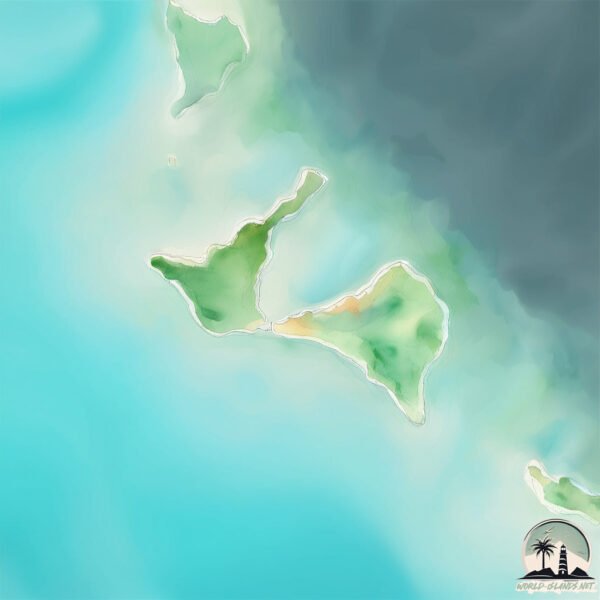Aiwa

Welcome to Aiwa, a Tropical island in the South Pacific Ocean, part of the majestic Pacific Ocean. This guide offers a comprehensive overview of what makes Aiwa unique – from its geography and climate to its population, infrastructure, and beyond. Dive into the details:
- Geography and Size: Explore the island’s size and location.
- Climate and Weather: Weather patterns and temperature.
- Topography and Nature: Uncover the natural wonders of the island.
- Infrastructure and Travelling: Insights on reaching, staying, and making the most of your visit.
- News and Headlines: Latest News.
Geography and size of Aiwa
Size: 0.729 km²
Coastline: 6.4 km
Ocean: Pacific Ocean
Sea: South Pacific Ocean
Continent: Oceania
Aiwa is a Tiny Island spanning 0.729 km² with a coastline of 6.4 km.
Archipel: Kiribati – An island nation in the central Pacific Ocean, comprising 33 atolls and reef islands, known for their vibrant culture and significant challenges due to climate change.
Tectonic Plate: Pacific – The world’s largest tectonic plate, covering much of the Pacific Ocean, known for the Pacific Ring of Fire with extensive seismic and volcanic activity.
The geographic heart of the island is pinpointed at these coordinates:
Latitude: -1.38709752 / Longitude: 174.90172716
Climate and weather of Aiwa
Climate Zone: Tropical
Climate Details: Tropical Rainforest Climate
Temperature: Hot
Climate Characteristics: This climate is typified by heavy rainfall throughout the year, high humidity, and consistently high temperatures, leading to lush rainforests and rich biodiversity. Seasonal temperature variations are minimal.
Topography and nature of Aiwa
Timezone: UTC+12:00
Timezone places: Pacific/Auckland
Max. Elevation: -9 m
Mean Elevation: -16 m
Vegetation: Sparse Vegetation
Tree Coverage: 77%
The mean elevation is -16 m. Remarkably, this unique island barely emerges above the sea level, showcasing nature’s fascinating interplay with the ocean. The island is characterized by Plains: Flat, low-lying lands characterized by a maximum elevation of up to 200 meters. On islands, plains are typically coastal lowlands or central flat areas.
Dominating Vegetation: Sparse Vegetation
These regions have limited plant growth, typically due to extreme conditions like aridity or poor soils. Vegetation is scattered and consists of hardy plant species. Aiwa has a tree cover of 77 %.
Vegetation: 2 vegetation zones – Low Diversity Island
Islands with two distinct vegetation zones offer slightly more ecological variety. These zones could be due to differences in elevation, moisture, or other environmental factors. While still limited in biodiversity, these islands may offer a contrast between the two zones, such as a coastline with mangroves and an inland area with grassland.
Infrastructure and Travelling to Aiwa
Does the island have a public airport? no.
There is no public and scheduled airport on Aiwa. The nearest airport is Aranuka Airport, located 223 km away.
Does the island have a major port? no.
There are no major ports on Aiwa. The closest major port is TARAWA ATOLL, approximately 372 km away.
The mean population of Aiwa is 105 per km². Aiwa is Moderately Inhabited. The island belongs to Kiribati.
Continuing your journey, Eanikai is the next notable island, situated merely km away.
Cruising past Aiwa Islands, Lau, Fiji



Kiribati is classified as Least developed region: Countries that exhibit the lowest indicators of socioeconomic development, with the lowest Human Development Index ratings. The level of income is Lower middle income.
News – Latest Updates and Headlines from Aiwa
Stay informed with the most recent news and important headlines from Aiwa. Here’s a roundup of the latest developments.
Please note: The data used here has been primarily extracted from satellite readings. Deviations from exact values may occur, particularly regarding the height of elevations and population density. Land area and coastline measurements refer to average values at mean high tide.
